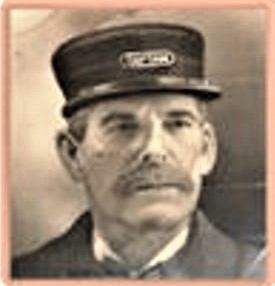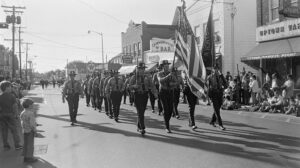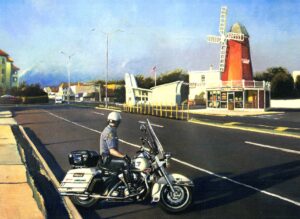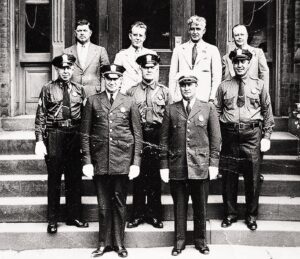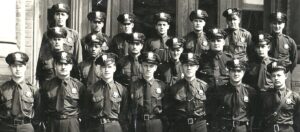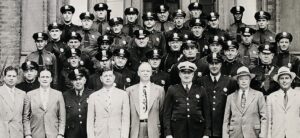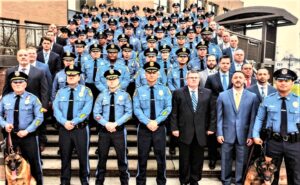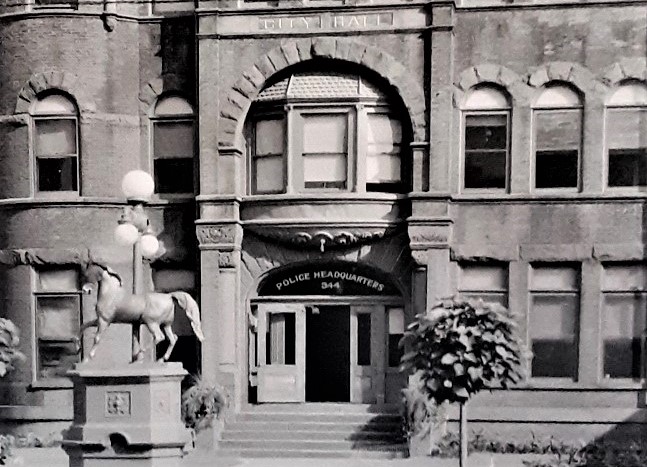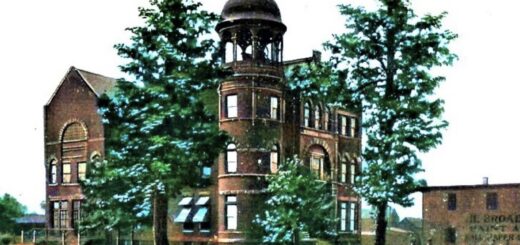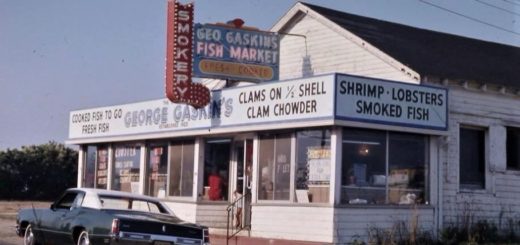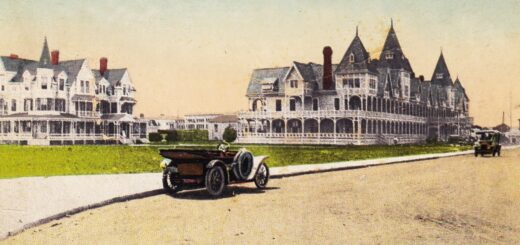Looking at the LBPD
Long Branch Police Department service dates back to a Civil War Hero …
Like most law enforcement agencies — they’ve been both admired and reviled. Brave and weak. Skilled and sloppy. Just like the rest of us mortals — they are imperfect. But the big difference is the police must do an impossible job (plus, face death every shift).
While Long Branch remains the “Friendly City” — local cops must get a fair share of credit for keeping necessary order through the many years. It’s never been an easy job (being a city cop seldom is). The Long Branch Police Department (LBPD) came into being just about the time a President of the United States decided to spend summers in town. Making for demanding work right away. Organized in 1868, the LBPD started with just one policeman (called “marshal”), Cornelius Van Derveer.
An early Long Branch true-believer, by June 1873 Van Derveer had been appointed to the Long Branch Commission. The five-member governing body created when the town was incorporated as a borough in April 1867. Prior to that, Van Derveer had been a member of the Ocean Township Committee which ran Long Branch prior to 1904. He also helped build the Church of the Presidents in Elberon.
Since the LBPD was founded city population has increased nearly 10 times (from a low of 3,800 in 1880 to a high of 31,000 in 2000). Not to forget the 100,000+ visitors who might appear on peak summer weekends. And yet today — more than 150 years later — city law enforcement still maintains peace and order.
“Blessed are the peacekeepers, for they shall be called the children of God.”
—Matthew 5:9
As for Long Branch law enforcement leadership, Henry Green was appointed “chief marshal” in 1870 at a $350 annual salary. The force also grew to three marshals that year. After Green retired, police leaders were: Joseph V. West, Charles Pitman Lloyd, James W. Banford, and James Layton before Long Branch incorporated as a city in 1904.
Interestingly enough, prior to 1905 police officers were elected or appointed annually. It wasn’t until Long Branch was reincorporated as a city that cops got tenure and a more modern police force emerged — 24 patrolmen were hired in 1904. Back then, officers wore white ribbon badges to identify themselves. According to Long Branch Daily Record history of the LBPD, the first official act the city commissioners asked of law enforcement was to remove a foul-smelling pig sty.
Members of the first permanent official police force in 1905 were: Joseph V. West, Salvinius T. Emmons, Frank B. Wheeler, Leonard S. Van Dyke, Joseph A. Poole, James H. Brown, John Kirby, Jr., Charles Phillips, William E. Miller, William D. Walling, Charles E. Clark, Manus McGarvey, Harry S. Clayton, Daniel S. Martin, Herman K. Emmons, Sr., Ivins Erricksen, Thomas Loprai, John Stilger, Patrick Callahan, William J. Nickson, John Havens, Augustus S. Voorhees, M.W. Lediard, and Michael Cunnen.
Prior to building a Town Hall, prisoners were kept in small cells in the basement of Washington Hall on Broadway or in cells underneath the Oceanic firehouse. The judge’s chambers were above the old Fesler Drugstore on the corner of Broadway and Second Avenue. All law enforcement operations moved into a new City Hall on Broadway in 1891. The LBPD then moved into another new City Hall in 1976 where it remains today.
The city’s longest serving chief of police was “Captain” James Layton, who was the top cop for 30 years. Beginning as a summer officer in July 1883 — he arrived when Long Branch was booming as a seashore resort destination. In that age it took just 14 summer policemen to entertain (and protect) a nation. Considered a “good and great man” by many admirers when he retired in 1918, Layton admitted that being “chief of police Is no bed of roses; far from it.” Back then the chief earned $1,320 (the last one got $206,000). Born in Howell Twp., Chief Layton died in December 1924.
The city’s detective bureau was created by William Walling in 1913. The Long Branch PBA was established in 1906 and the city police pension fund began in 1913. Regular evening city-wide motor patrols started in 1930. Cornelia Woolley Hopkins became the first woman police commissioner in 1931, not only in Long Branch but in state history.
The current LBPD includes about 110 police officers and an annual budget of about $12 million.
LBPD Police Chiefs:
• James Layton (1888-1918)
• William D. Walling (1918-1926)
• Joseph H. McGarvey (1926-1933)
• Frederick A. Wardell (1933-1942)
• Thomas J. Marks (1942-1958)
• Robert C. Gurley (8/1951-12/53 temporary chief)
• Robert C. Gurley (1958-1964)
• Thomas M. Pesano (1964-1968)
• Joseph D. Purcell, Jr. (1968-1970)
• Jason Roebuck (2017-2021)
After 1970, the office of police chief was unfilled. According to the Long Branch Daily Record, the idea of a civilian public safety director came from a December 1963 Monmouth County Grand Jury probe of organized crime and gambling in Long Branch. Mayor Paul Nastasio, Jr. officially created the post in July 1966 (under Plan A of the Faulkner Act). For the next five years the public safety director job was filled by unofficial part-timers.
In April 1971, John M. Buffin, a former NJ State Police major, was hired as the city’s first official public safety director for $18,000. Mayor Henry Cioffi made the appointment with city council approval. Called a “policeman’s policeman,” Buffin helped restore order before retiring in March 1976. The chief of police title was eliminated by city ordinance in 1974. That chain of command lasted until 2017 when Jason Roebuck became the first city police chief in 47 years. By 2021, the chief’s post was eliminated again. Since October 2022, the Long Branch Director of Public Safety is William Broughton.
More Info
• Long Branch City Hall History & Images — HERE
• Long Branch Police Department website — HERE
• NJ State Police: Uniform Crime Reports (1900-2020) — HERE

Serve & Protect — Long Branch Police Department — organized in 1868. Contact: 732-222-1000, Website.
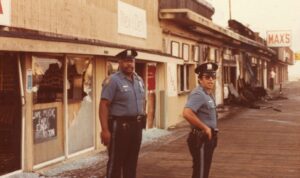
Long Branch’s Finest — City cops on the boardwalk after a fire wrecked Max’s, August 1984 (David Wells Photo).
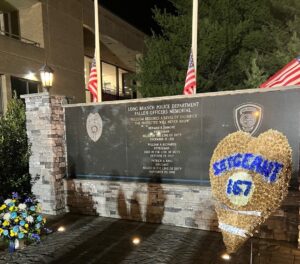
Ultimate Sacrifice — 25-year Remembrance Ceremony for LBPD Sgt. Patrick King at Long Branch City Hall on Broadway, November 2022.
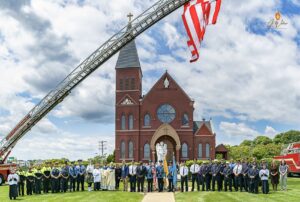
God’s Work — “First Responder Mass” at St. Michael’s Church in West End, June 2023 (LBPD Photo). The special event was held in support of the dedicated Long Branch Police, Fire & First Aid membership.

Downstairs — LBPD sign in back of City Hall on Broadway, 2015 (Dwayne Dentz Photo). In 1909 it cost $21,100 to run the city’s police department.
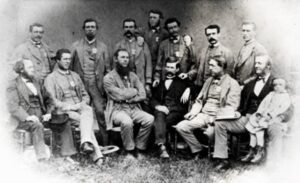
Long Branch police force, 1880 (NJ State Archives Photo).
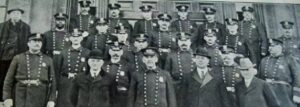
Long Branch police force, 1912 (NJ State Archives Photo).
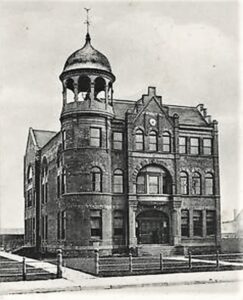
Old Long Branch City Hall, 1906. Opened in 1891 and torn down in 1976. For 70 years it was the city police headquarters.
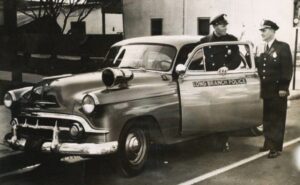
LBPD Chief Thomas Marks (r) with the squad’s new Gold Police Car to commemorate the city’s 50th year of incorporation, 1954.
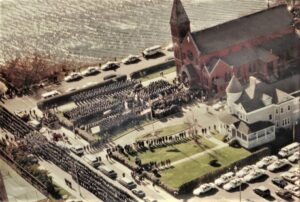
RIP — It seemed as if all of Long Branch stood as one in solemn tribute to LBPD Sgt. Patrick King — killed in the line of duty. His solemn November 1997 funeral at St. Michael’s Church in West End touched all — helping the city with its grief. MORE INFO
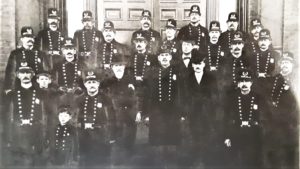
LB police force, 1895. “Mayors have come and gone, government and territorial boundaries have also changed, but Captain Layton has been continued in office,” stated the Long Branch Daily Record upon his retirement in April 1918, “and given his best to the people of Long Branch.”
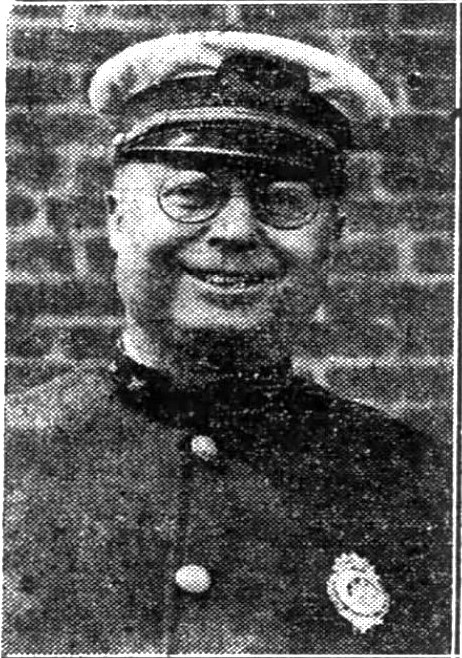
Chief William D. Walling, 1926. Born in Oceanport in April 1874, he joined the LBPD in 1901 as a patrolman. Later he founded and led the detective bureau and became police chief in October 1918. The 8-hour work shift was instituted during his time. A father of seven, he died in April 1926 while still leading the force. His son, William, Jr. served 40 years as a city cop and 8 years as a city councilman before his death in 1991.
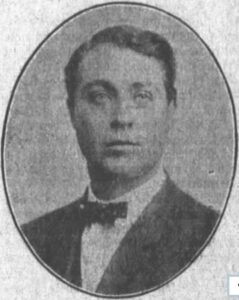
William Walling at the time of his appointment at LBPD detective sergeant, Long Branch Daily Record, June 1907. “One of the most popular of the City’s Finest” would become chief in 1918.
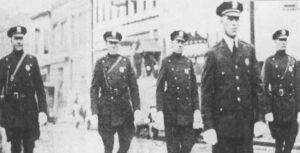
LBPD Chief Frederick A. Wardell leads an Armistice Day Parade on Broadway. Long Branch Daily Record, November 1936. Born in Long Branch in 1900, he became a patrolman in 1921 and detective Lt. in 1926. On becoming police chief in October 1933 he was the youngest in the state. Considered an innovative leader, he instituted the two-way radio, established a modern finger-print and records bureau, and required department members to take first aid training. He died in office November 1942, having recently been elected president of the Monmouth County Police Chiefs Association.

Long Branch City Hall and Police Headquarters on Broadway, 2014. The LBPD responds to more than 32,000 calls to service annually.
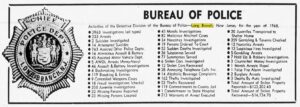
Activities Report — Long Branch Department of Public Safety: Bureau of Police, Long Branch Daily Record, Feb. 1966.
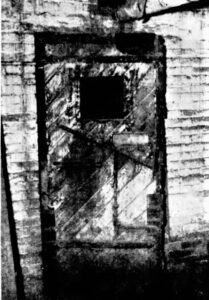
Old LBPD jail cell under the Oceanic Firehouse on Norwood Avenue, 1948. Six cells were originally built and used mostly used for drunks and horse thieves.
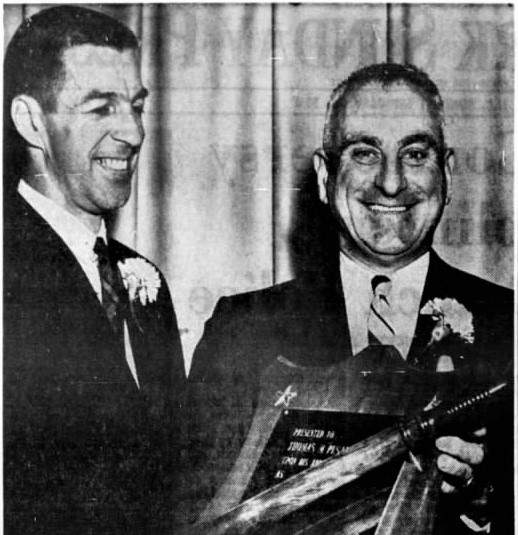
LBPD Chief Thomas Pesano (r) with Detective Micheal Irene (l) at a police department celebration. APP, Feb. 1967. Born in Poughkeepsie, NY and a 1933 LBHS grad, Chief Pesano, joined the force in 1946 just out of the US Navy. He died June 1968.

“Family of Fuzz” — The McGarveys of the LBPD. From left: LBPD Chief Joseph Henry McGarvey, Sr., future LBPD patrolman Joseph H. McGarvey, III and LBPD patrolman Joseph H. McGarvey, Jr. Long Branch Daily Record, November 1957. All of the men were born in Long Branch. JHM, Sr. (was city chief of police from 1926-1933; he joined the force in 1911 and died in October 1960); JHM, Jr. (was a sage beat cop for some 30 years before his death in August 1968); and JHM, III (starting in 1959 he rose to detective before leaving the LBPD in the late 1970s. Also a US Navy vet, Joe died in Sept. 2018).
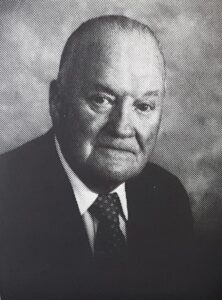
LBPD Chief Joseph D. Purcell, Jr. (in office 1968-1970). A NYC native and 1934 LBHS grad, he joined the city police force in 1938. He died in January 2010.
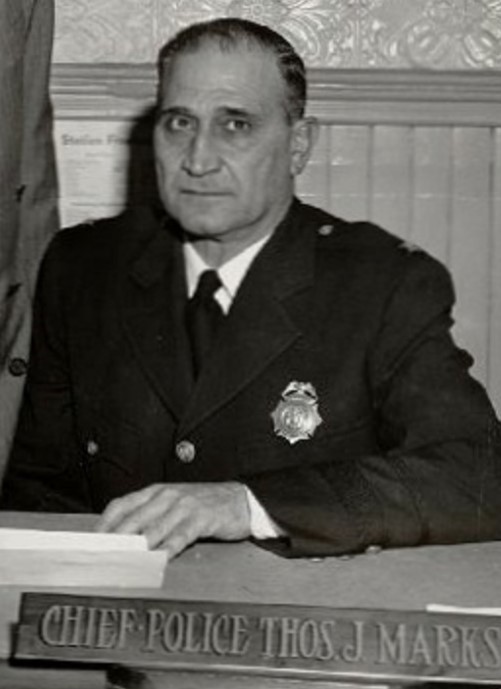
LBPD Chief Thomas J. Marks, 1940s. A former NJ welterweight boxing champ, he joined the city police force in 1924. Born in Long Branch, Marks — one of nine siblings and father of four daughters — led the city cops from 1942 to 1958.
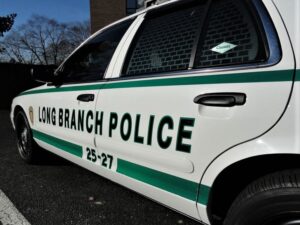
Long Branch Police Department: 2020 Public Safety Report — HERE.

